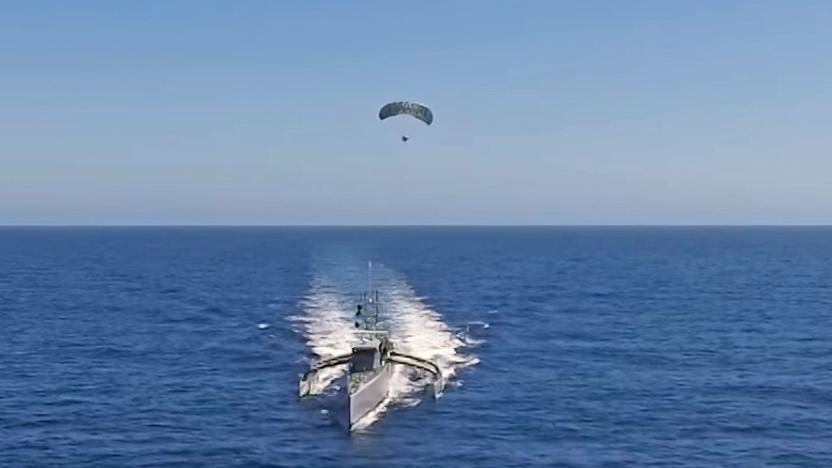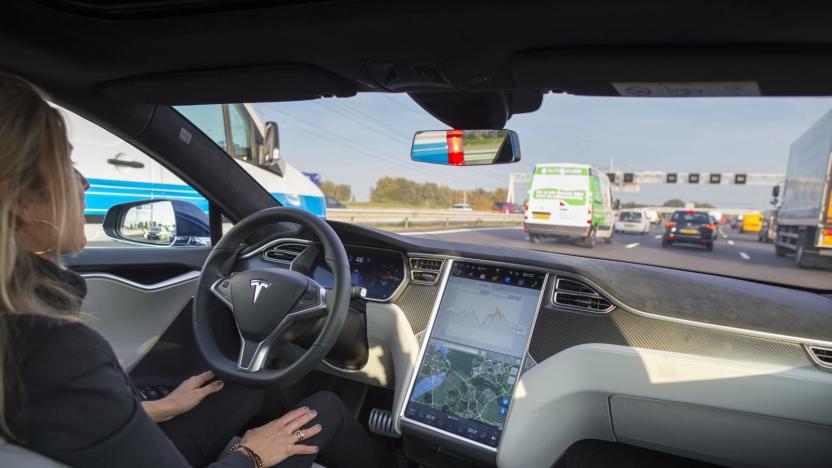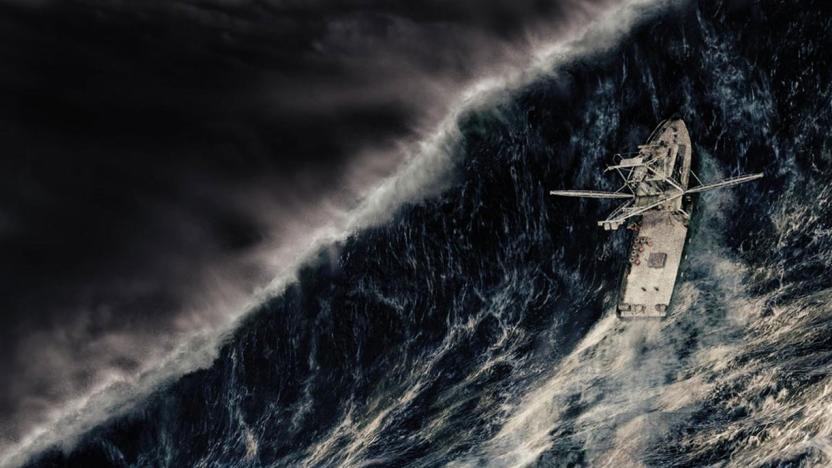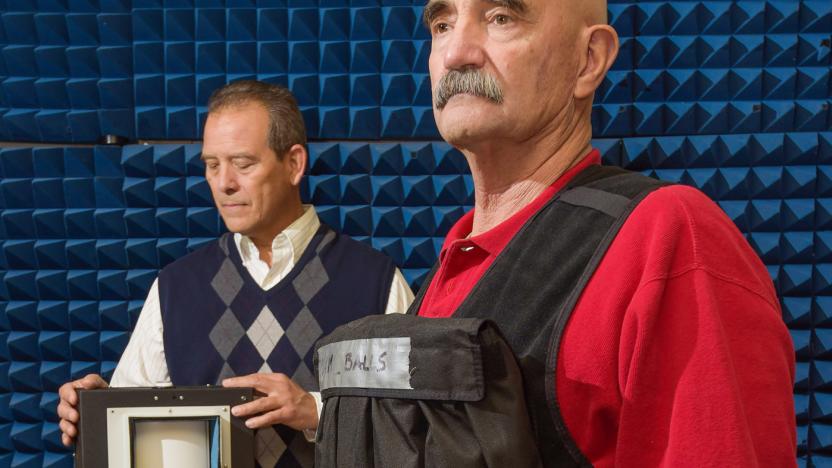radar
Latest

Bosch and TomTom map roads with radar for autonomous vehicles
Bosch and TomTom have come together to create high-resolution road maps based on radar signals. The product of the two companies' collaboration, a system called "radar road signature," is a move towards automated driving.

How VW's Arteon keeps you alive if you pass out while driving
The Volkswagen Arteon is not a fully fledged self-driving car, but it definitely has some fancy autonomous features. The sedan, which is due to land in the United States this summer, features a program that will recognize if a driver has blacked out at the wheel and then gently steer the car to the side of the road.

NASA finds long-lost Indian lunar orbiter
India lost contact with its first lunar orbiter, the Chandrayaan-1, back in 2009. Now, NASA has revealed that the agency discovered its location in July 2016 after testing a method that can be used by future lunar missions. Chandrayaan-1 is a relatively tiny cubic probe that measures five feet on all sides, making it the perfect target for the radar experiment conducted by a team of Jet Propulsion Laboratory scientists. The team wanted to find out whether a technique used to observe small asteroids can also spot spacecraft orbiting the moon.

Google's mini radar can identify virtually any object
Google's Project Soli radar technology is useful for much more than controlling your smartwatch with gestures. University of St. Andrews scientists have used the Soli developer kit to create RadarCat, a device that identifies many kinds of objects just by getting close enough. Thanks to machine learning, it can not only identify different materials, such as air or steel, but specific items. It'll know if it's touching an apple or an orange, an empty glass versus one full of water, or individual body parts.

DARPA tests parasailing radar with its robotic boat
If you want a vision of what naval battles could look like in the near future, you just got it. DARPA has tested a parasailing radar array (part of its Towed Airborne Lift of Naval Systems project, or TALONS) using its robotic ACTUV boat as a nest. The array flew up to 1,000 feet, where its sensors were far more effective than they'd be at ship level. Its surface tracking radar had six times the range, and even a handheld radio covered three times its usual distance. The combination could lead to unmanned warships that not only travel for months on end, but can easily detect potential threats before they're in firing range.

BlackBerry is done making smartphones
In BlackBerry's latest quarterly financials released today, the company revealed it's getting out of the hardware business once and for all, choosing instead to "outsource that function to partners." It's not a huge shock given BlackBerry CEO John Chen has foreshadowed the cut and run several times. Earlier this year, he warned that if hardware wasn't making a profit by September it would be time to call it quits, and he's kept his word after the Mobility Solutions division posted an $8 million loss for this past quarter. This doesn't mean we've seen the last of BlackBerry handsets, though; they just won't be produced in-house anymore.

Tesla's next Autopilot update will rely more on radar
Today Tesla announced that its upcoming Autopilot 8.0 update will rely more on radar than previous versions of the semi-autonomous feature. To boot, it will penalize inattentive drivers.

Tesla hopes existing tech improves its semi-autonomous driving
Many have speculated that Tesla could have prevented the Autopilot-related Florida crash if its cars had lidar (visible light detection and ranging) to better understand the world around them, not just cameras and radar. However, Tesla might have a way to improve its semi-autonomous driving without grafting on new equipment. Elon Musk explains that his company hopes to adapt its existing radar systems to produce a lidar-like map of the surrounding environment with the help of "temporal smoothing" that compares object positions over time. The current hardware should produce a high-enough resolution for this to work, he adds. And unlike lidar, it can see through dust, rain and snow.

Yahoo's latest mobile app is a conversational travel planner
Yahoo's latest mobile app wants to help you browse more than just the internet. Radar, which launched today for iOS, acts as your "virtual travel guide" by using machine learning and artificial intelligence (not to mention the travel confirmations in your email) to offer additional recommendations, reviews and activities around your next destination.

Stealth on the Navy's newest destroyers might be too good
America's new Zumwalt-class destroyers have been built with strong stealth capabilities, however that feature has caused a few unforeseen issues, according to a new report from Military.com. During sea trials last month, the Navy discovered that the ship's reduced radar signature was almost too effective and might require onboard radar reflectors when not in theater.

We're getting closer to real invisibility cloaks
We've been inching closer to real-life invisibility cloaks for a bit now, but going full on Harry Potter in the Hogwarts library is probably still a ways off. The latest advancement in metamaterial-based vanishing tech from Iowa State University guards whatever it's placed on from cameras, according to a paper published in Nature. The naked eye? Not so much. And even those cameras can't hide it from a human viewing a video feed, only other machines or perhaps radar. The researchers achieved this by embedding split ring resonators filled with galinstan into silicone sheets. Stretching those sheets is a form of tuning of sorts, and allowed the scientists to suppress certain radar waves up to about 75 percent. This type of tech could be used in a stealth fighter jet for example, as everything RF notes.

MIT builds an early warning system for sailors
MIT believes that it's developed an early warning system for rogue waves that could save the lives of sailors. Currently, predicting when a ten foot high wave is going to crash across a ship takes a room full of supercomputers. That's not helpful for the scrappy fishing boats you see on Discovery Channel shows like Deadliest Food Grabbers and Gruff Seamen at Sea. That's where this new method from Themis Sapsis and Will Cousins comes in, which spot impending trouble and alert crews to batten down the hatches.

A real suicide bomb detector should arrive this year
Ever since terrorism became an all-too-real fact of life, people have dreamed of suicide bomb detectors that spot an explosive vest before its wearer has a chance to detonate. However, making a working example has proven elusive. Some companies threw their hands up in frustration after developing systems that just weren't accurate enough. Others, meanwhile, didn't even try that hard -- the UK went so far as to ban some detectors that proved utterly ineffective. At last, though, it looks like a genuinely functional suicide bomb detector is on the horizon.

World's first radar station gets life-saving grant
A radar site considered by some to be as historically important as Bletchley Park will be preserved, thanks to a £1.4 million ($2 million) grant from the UK government. The Bawdsey facility in eastern England, established in 1938, was the world's first operational radar station. The then-brand new technology helped the allied forces win the Battle of Britain, and some historians think it may have shortened World War II by as much as two years. The facility was closed in 1991, and is on Britain's "at-risk" heritage list because of structural issues and water damage.

Runaway blimp prompts the US to freeze a missile defense program
That US Army radar blimp that ran amok didn't just trigger an internet frenzy... it may have put the brakes on a big military research initiative. Pentagon officials have frozen the JLENS (Joint Land Attack Cruise Missile Defense Elevated Netted Sensor System) program behind the blimp while they investigate what went wrong. The government isn't saying what it might do, but there are already politicians calling for the blimps to be cut. JLENS had already been hanging by a thread ever since 2010, when the Army threatened to kill it -- there are longstanding concerns about both the technology's reliability and its effectiveness compared to conventional aircraft. Don't be surprised if these defensive dirigibles vanish in short order. [Image credit: U.S. Air Force/Tiffany DeNault via Getty Images]

Nauto's dash cam promises to make old cars a little smarter
As much as we would love a self-driving ride with fancy pedestrian detection technology, nobody thought to add it to our '96 Dodge Stratus. Thankfully a new startup called Nauto is hoping to remedy this issue with a plug-in kit that, when it launches, will provide you with some of the perks that come with buying a new car. Effectively, the Nauto is a dash camera that monitors the surrounding vehicles as well as your face, keeping track of your eye movements and making sure you're being safe.

Predator drones could soon hide under dielectric 'invisibility cloaks'
America's fleet of Predator UAVs could soon become even harder to shoot down (or even detect for that matter) thanks to a new kind of camouflage developed at UC San Diego. UCSD professor Boubacar Kante and his team published their findings last month in the journal Progress In Electromagnetics Research and will submit a separate report to the Department of Defense later this month, according to reports from the Army Times. The material, dubbed the "dielectric metasurface cloak," builds on earlier work from Duke University in 2006. It's essentially a thin layer of Teflon studded with ceramic particles and capable of modulating wavelengths of energy along the electromagnetic scale (including both visible light and radar).

Radar turns your smartphone into a baseball speed detector
Want to know if your baseball team's pitching skills are up to snuff without carrying a dedicated (and frequently not-so-smart) speed detector? Scoutee might have something up your alley. It's crowdfunding a baseball radar peripheral that turns Android phones and iPhones into pitch speed detectors. Plunk the device in the right place (including on the back of your phone, if you like) and it'll tell you just how quick that fastball really was. You can not only add notes, but record video with a speed overlay -- you'll know whether or not that curveball was slow from the start.

Ground-penetrating radar reveals huge monument near Stonehenge
Stonehenge is an iconic and mysterious English landmark, but it's not the only place to attract the interest of local archaeologists. Nearly 100 stone monoliths have been discovered at a site called the Durrington Walls, about two miles north-east of Stonehenge. For the average visitor, there's little to see at ground level -- just the grassy remains of a sloping bank. But with ground-penetrating radar, researchers have mapped the area and discovered evidence of up to 90 stones three feet underground. Around 30 remain intact, measuring up to 4.5 meters tall, while fragments of a further 60 lay beside them.

FAA says a buggy software update grounded flights
Ever got a bad smartphone update? Now imagine that your phone controls air traffic on the Eastern seaboard, and you have some idea what happened to flights on Saturday. The FAA said that a software update that was supposed to help controllers see frequently used info at a radar facility ended up bringing down the overall system. That caused the cancellation of hundreds of flights in Baltimore and Washington, DC, reducing capacity up to 28 percent. The agency said everything's fine now that it's disabled the new function, and it's working with Lockheed Martin to figure out why the bug wasn't caught in testing. Meanwhile, you can now factor software glitches, hacking and bad routers into your flight plans.










